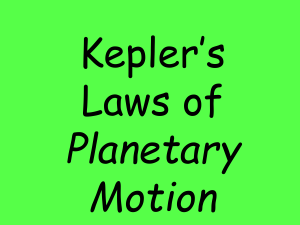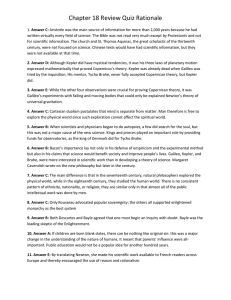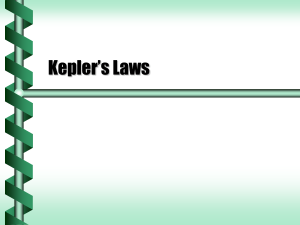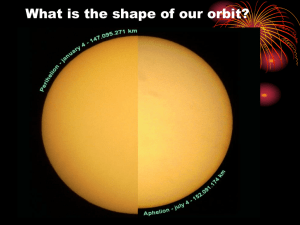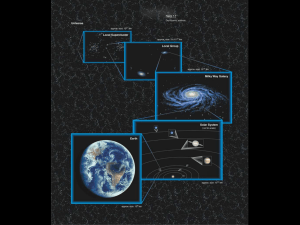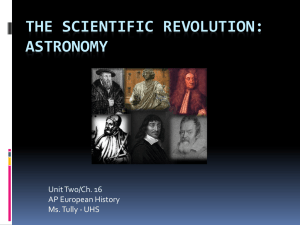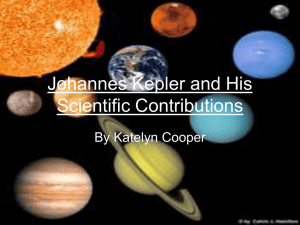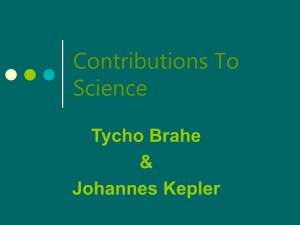Tycho Brahe & Kepler: Planetary Motion & Astronomy
advertisement
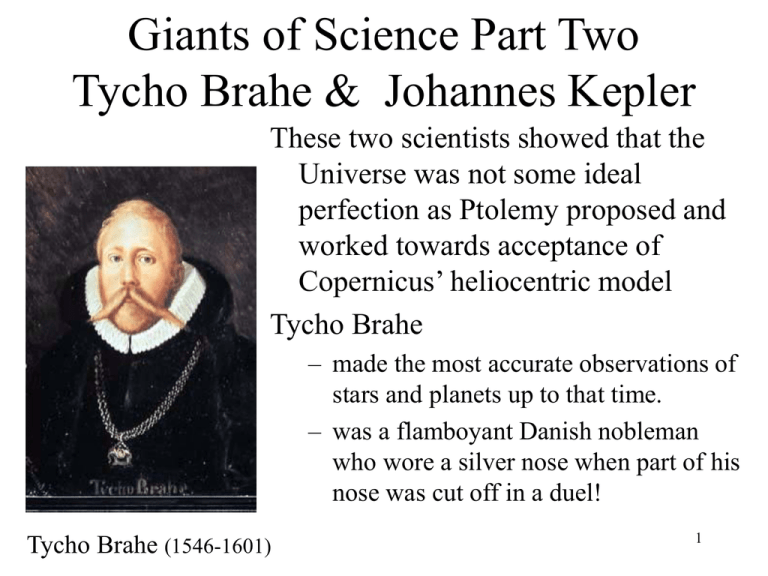
Giants of Science Part Two Tycho Brahe & Johannes Kepler These two scientists showed that the Universe was not some ideal perfection as Ptolemy proposed and worked towards acceptance of Copernicus’ heliocentric model Tycho Brahe – made the most accurate observations of stars and planets up to that time. – was a flamboyant Danish nobleman who wore a silver nose when part of his nose was cut off in a duel! Tycho Brahe (1546-1601) 1 Tycho Brahe and Uraniborg • He lived in a mansion/observatory on an island off the coast of Denmark. • The mansion had very sophisticated equipment (but no telescopes!) to help him and his assistants to measure the positions of stars and planets. • He named the mansion Uraniborg (Sky Castle). Some of the equipment used at Uraniborg 2 Tycho Brahe’s Discoveries • As a young man he proved that comets had to be farther from Earth than the Moon. • He also proved that a star which appeared to brighten dramatically over a few weeks was also beyond the Moon. • Both observations showed that the heavens could change like the Earth. • He also came up with his own compromise model of the Universe. Brahe’s compromise: All the planets went around the Sun while the Sun moved around a fixed Earth 3 Tycho Brahe & Johannes Kepler • A few years before he died, Brahe hired Johannes Kepler to help in analyzing the data he had collected. • Brahe started him out on his hardest problem: determine the orbit of Mars. • Mars has the largest observed retrograde motion and no circular orbit could be found to match Brahe’s observations. Brahe and assistants making observations 4 Kepler’s Models After years of work, the most accurate circle he could find for Mars’ orbit still left an error of 8 arcminutes (about 1/4 the angular size of the full Moon). Johannes Kepler (1571-1630) “If I had believed that we could ignore these eight minutes [of arc], I would have patched up my hypothesis accordingly. But since it was not permissible to ignore, those eight minutes pointed the road to a complete reformation in astronomy” - Kepler 5 Kepler’s Breakthrough • Kepler’s key discovery – planets do not orbit in circles but rather in ellipses. – the Sun was not at the center of the ellipse but rather at one focus. • With this breakthrough he obtained excellent agreement between his model and observations. 6 Properties of Ellipses • Each point marked by a tack is called a focus. • The farther apart one focus is from another the more eccentric the ellipse. • The line cutting the ellipse in half that passes through each focus is called a major axis. Half the major axis is called a semimajor axis. • The semimiajor axis is the average distance of the planet from the Sun 7 Kepler’s 3 Laws of Planetary Motion These laws describe the observed planetary motions but do not describe why these motions occur as they do. 8 Kepler’s First Law of Planetary Motion The orbit of each planet around the Sun is an ellipse with the Sun at one focus. – There is nothing at the other focus. – The average distance of the planet from the Sun is the semimajor axis. – Throws out Ptolemy’s perfect circular orbits. 9 Kepler’s Second Law of Planetary Motion As a planet moves around its orbit, it sweeps out equal areas in equal times. – A planet travels faster when it is nearer the Sun and slower farther away – Throws out Ptolemy’s uniform motion 10 Kepler’s Third Law of Planetary Motion The amount of time it takes a planet to orbit the Sun is related to the size of its orbit by P2(years) = a3(AU) – 1 AU (astronomical unit) is the semimajor axis of the Earth’s orbit. Earth’s average distance from the Sun. – It doesn’t matter how elliptical the orbit as long as the average distance is the same 11

